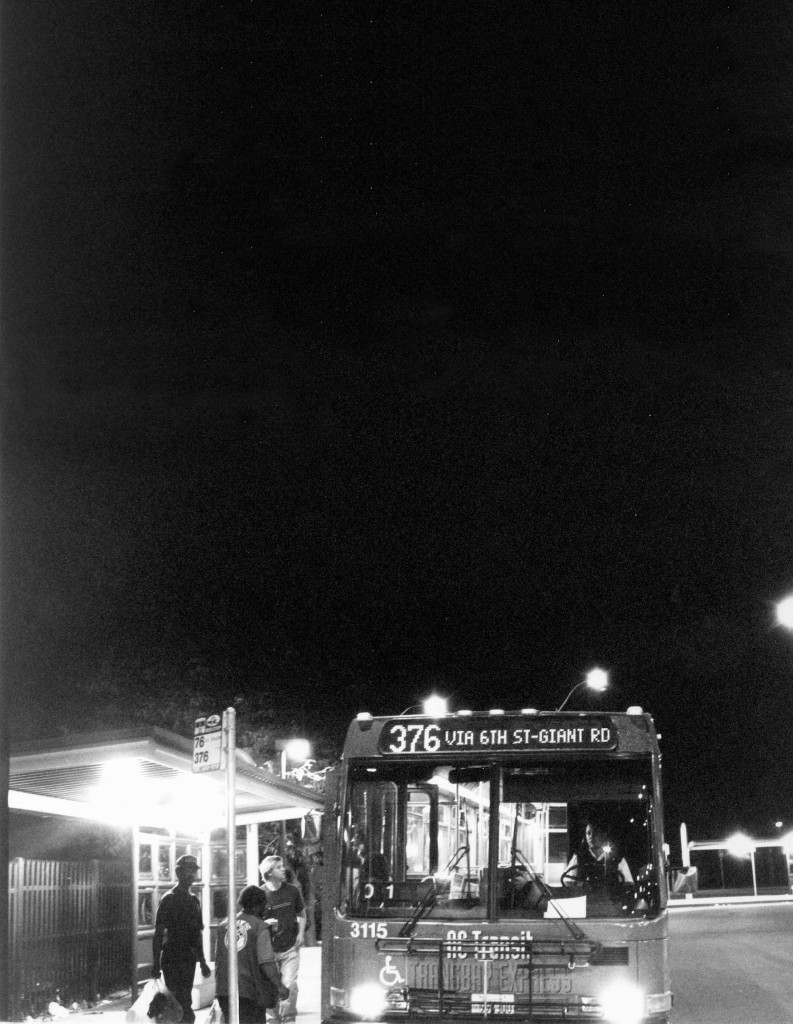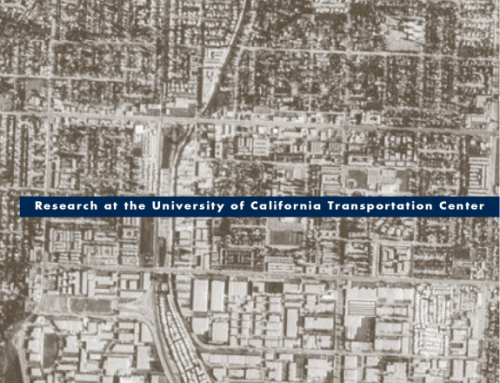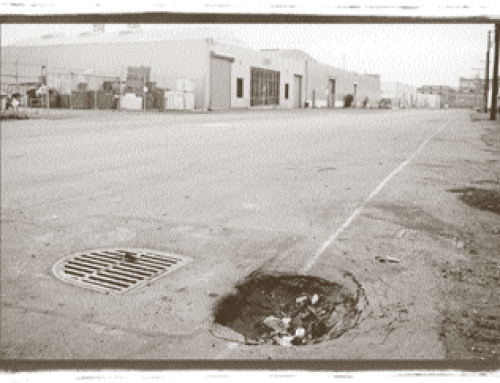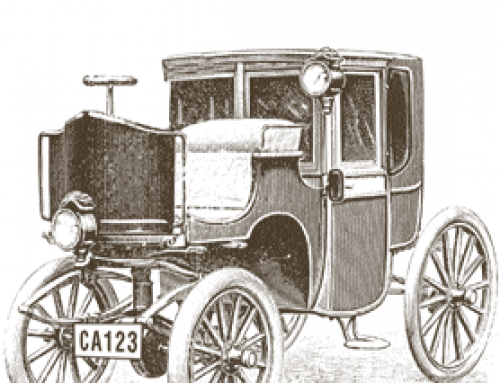[sharelines]A learning partnership between the community and a transit agency can increase effective problem solving.
North Richmond, located in west Contra Costa County adjacent to San Francisco Bay, is one of the most distressed communities in California. It’s plagued by poverty and high unemployment, like many other places. It differs from other high-poverty minority communities principally in being somewhat isolated geographically, and therefore in need of creative transportation solutions.
In 1996, North Richmond faced the specter of welfare reform along with every other community in California and the nation. In very short order, many residents of North Richmond were expected to find jobs or accept assigned jobs. If the federal law were to be implemented as written, many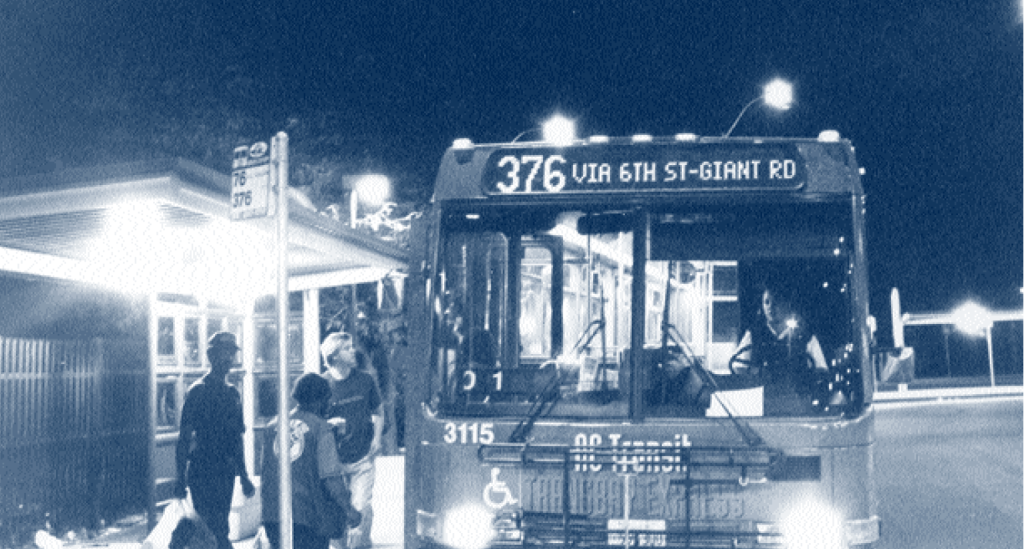 could find themselves dropped from public assistance after 18 months (if they did find work) or sooner (if they did not).
could find themselves dropped from public assistance after 18 months (if they did find work) or sooner (if they did not).
Unfortunately, welfare reform showed up just when bus service was being curtailed. Following several years of increasing financial pressure, the Alameda-Contra Costa Transit District (AC Transit) was forced to cut its overall service level by 11 percent. In North Richmond that meant an end to evening service after 7:30 p.m. and a reduction in Saturday service to one-hour In a community where relatively few residents owned cars and where there were virtually no jobs within its borders, this was disastrous. These changes meant that the kinds of jobs low-skilled individuals would be likely to find, like sorting packages at UPS on the graveyard shift, were inaccessible. Any job that started or ended much outside standard business hours could not be reached by bus, and there were no alternatives for most North Richmond residents.
In early 1997, community leaders, concerned about the effects of welfare reform on North Richmond, met to talk about strategies for coping with the changes. They quickly identified transportation as an across-the-board priority, meaning that transportation solutions were necessary to deal with problems ranging from employability to after-school recreation opportunities and mobility for family caregivers. It became clear that AC Transit’s service reductions had to be reconsidered, and in May 1997 these community leaders tried to persuade AC Transit to restore service.
The Classroom
Community members were invited to address the AC Transit board meeting of July 9, 1997. Residents, with help from the staffs of several community nonprofits, carefully planned their presentation with an eye to educating the bus company. Several community members emerged as leaders in this process. Joe Wallace, a longtime North Richmond resident, was one of them. He told about the kinds of problems faced by AC Transit customers: “I would love to take night classes at Contra Costa College, but the bus service ends just as the classes begin,” he said. “The first bus leaves North Richmond in the mornings at 6:09 a.m., and the last bus leaving the Del Norte BART station for North Richmond is at 7:35 p.m. If you work or go to school nights, you must find other means [for getting there]. If you work weekends, [you have] a problem because [there’s] only one bus per hour.” He pointed out a chilling fact: “The poor people who must use the buses for doctors’ appointments. . . must leave home from one and a half to two hours early just for appointments here in Richmond.”
AC Transit had been self-consciously “reinventing” itself since 1992.
Other presentations by some of the professional staff of county and nonprofit agencies active in North Richmond supported Wallace’s testimony. One of the speakers was Nina Goldman, who had demonstrated loyalty to the community and its interests with several years of community organizing work and effective management of the county’s Integrated Service program. A team like that—including someone from the community and a middle-class outside professional—brought a mix of needed leadership skills.
To their surprise and delight, the AC Transit board responded by approving, in principle, a service augmentation. AC’s staff also realized it needed to teach the community about the financial constraints it faced. To this end, it arranged a series of meetings between AC personnel and the North Richmond residents. These meetings, which were carefully planned by Joe Wallace, Nina Goldman, and AC planner Aena Prakash, brought AC Transit representatives—from board members to bus drivers—into North Richmond to listen to the community’s concerns, identify specific needs, and educate citizens about the agency’s constraints. This was a period of excitement, marked by high emotion and angry words. Community members’ first response was to express anger at having been excluded from neighborhood meetings that AC staff had held to explain service cuts. It could have been the beginning of a confrontational relationship between community and agency, but instead something very different happened.
At that first meeting, there was some disorder as residents stood up and blasted board members for ignoring them. But instead of responding with equal vehemence, the AC Transit representatives listened to the comments, acknowledged them, and apologized. This helped defuse the volatile atmosphere, and angry residents calmed down enough to accept the conciliatory gesture. It was an important first step in what would be a long and ultimately constructive process: the residents vented their frustrations, were heard, and were then able to listen to what the agency had to tell them.
Recipe for Success: A Learning Partnership
 Relationships between the North Richmond community and the board and staff of AC Transit were initially turbulent but quickly smoothed out tobecome a remarkably amicable and effective partnership. We’re calling it a “learning partnership.” We don’t mean to tout a learning partnership as a universal strategy for poor communities trying to get the attention of mass-transit agencies. But it can be useful to analyze how such a partnership functions, and to consider the conditions necessary to allow it to work.
Relationships between the North Richmond community and the board and staff of AC Transit were initially turbulent but quickly smoothed out tobecome a remarkably amicable and effective partnership. We’re calling it a “learning partnership.” We don’t mean to tout a learning partnership as a universal strategy for poor communities trying to get the attention of mass-transit agencies. But it can be useful to analyze how such a partnership functions, and to consider the conditions necessary to allow it to work.
A “learning partnership” recognizes that most large public bureaucracies—in the United States this includes most public transit agencies—are indifferent learners. To a large extent, their learning problems do not originate with the individuals who manage these bureaucracies, but rather with the various constraints that are placed on agencies by the publics they serve. For example, flexibility is typically limited by tight overall budget constraints, line-item budgeting, and traditions of budgetary accountability. Personnel rules and collective-bargaining contracts reduce flexibility even further. A preference for working within familiar routines prevents many agency employees from working hard to improve performance, and those managers who are eager to push for change have relatively few resources for counteracting that preference.
But times are changing. In this era of “reinventing government,” many agencies are trying to improve. They are gathering systematic information about customer satisfaction, asking for feedback and suggestions from their line-level personnel who are in close contact with agency customers, and giving more discretion to low-level staff to make the sorts of accommodations that promise to improve service with no increase in cost. AC Transit is, by some accounts, an example of a more diligent learner, at least since the present General Manager, Sharon Banks, assumed her position in 1992. Certainly this was suggested by the agency’s dealings with the North Richmond community.
For its part, the community, partly on its own initiative and partly in response to prompting from AC staff, learned about the transit agency’s situation and taught AC staff about the community’s situation. This relationship, where teaching and learning go in both directions, forms the essence of a learning partnership.
Teachers and Students
In most effective teacher-student relationships, both the teacher and the student are receptive to learning and frequently switch roles. In a confrontational relationship, which is perhaps a more typical style of relations between a poor community and a public agency, it is difficult for two battling factions to reach a point where they can listen to each other, let alone enter into a productive partnership. With North Richmond and AC Transit, however, certain conditions were present that made such a partnership possible.
First, the community itself, faced with a serious crisis, became organized. Several leaders emerged who were articulate, forceful, and dedicated; and their work not only helped form a basis for a good working partnership but helped create a clear sense of united purpose within the community itself. These leaders made a conscious choice to try to be teachers to AC Transit; in the words of one of them, they wanted “to show AC that we were trying to inform them about a situation they certainly must not be aware of, rather than to blame them. We wanted them to feel that we assumed that, once they were better informed, being good people, they would certainly make this problem go away.”
A relationship where teaching and learning go in both directions forms the essence of a learning partnership.
As for AC Transit, the agency had been self-consciously “reinventing” itself since Sharon Banks took over and had already made several relevant changes. For example, the organization had created cross-functional committees, with representation from planners, drivers, road supervisors, and facility superintendents as well as managers, to discuss the ramifications of service changes. The drivers’ union and AC management had worked hard to change what had been a somewhat hostile relationship into a productive one. Also, the agency had been reaching out to the public. When forced to cut services, AC held 48 community meetings throughout its district to explain why the cuts were necessary and to listen to comments from community groups. North Richmond’s exclusion from this process was one sign that AC had not perfected its listening strategy. However, by the time it began to meet with Richmond’s community representatives, the agency already had some practice listening to angry groups.
In addition to these changes, there were two basic conditions present in this case that helped allow the learning partnership to mature: Despite its monetary constraints, AC Transit had at least a little budgetary flexibility; and its board had some concern for the equitable treatment of poor neighborhoods.
Learning to Listen
After the emotional outbursts of the first meeting were out of the way, both agency and community got down to the business of teaching and learning. AC Transit representatives reviewed the budgetary history of the agency and explained its priorities (for example, it was very important to preserve the routes heavily used by school children, 60,000 of whom are served by AC Transit). They had to explain that shortening headways would result in shorter service hours. They also discussed details of the agency’s budget, and opened the possibility of tapping its recently established “contingency reserve” fund to help pay for the expanded services the community wanted. But agency representatives also let the community know that it needed help finding outside funding, and it expected some of that help to come from the community.
Meanwhile residents were also teaching and learning. Community members placed stickers on large wall maps indicating where they wanted bus stops. There was an outpouring of ideas, some of which had to be gently rejected (like the enthusiastic suggestion that community members drive idle buses; this became an opportunity for AC representatives to teach about liability and labor relations).
Both parties were learning to consider possibilities before rejecting them outright.
But other ideas were not so easily set aside, and both parties to the discussion were learning to consider possibilities before rejecting them outright. For example, the residents were emphatic about starting the new service by Thanksgiving, so that they would have access to jobs during the Christmas hiring season. At first AC Transit balked: usually it takes quite a long time to start a new service, since there are many different elements that need to be planned (as one example, schedules have to calibrated, tested, planned, and published ahead of time). The inclusion of the drivers’ union in the public meetings proved to be important for removing this stumbling block. AC management could not have obliged drivers to accept modifications in the assignments cycle at this late date, but after hearing pleas from the community, union representatives were able to explain to other drivers why this was an important consideration. Volunteer drivers eventually stepped forward. This gave impetus to removing other roadblocks—and the new service was indeed inaugurated by Thanksgiving.
Not only did AC begin nighttime service, but the new service was in some respects even better than the old. The new Line 376— “the North Richmond Night Jobs Shuttle,” as some called it— improved what transit planners call “connectivity” with schedules of other bus lines, combined stops from previously separate routes, and permitted bus drivers to make limited deviations from the fixed route in order to discharge patrons closer to their homes.
Winning Trust
In any partnership, a trusting relationship is not only more pleasant, but also more productive. Trust made it easier for the community and the agency to work synergistically to solve common problems. Furthermore, by signaling that the transit agency would actually do something for the community, the agency also increased the likelihood that factions within the community would coalesce and treat one another as partners rather than competitors. That development in turn facilitated more agreeable and productive relations between representatives of both the community 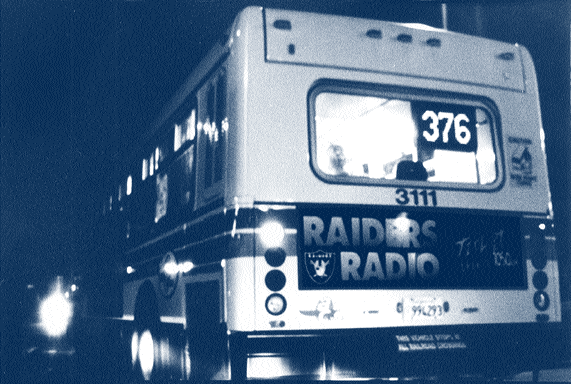 and the transit agency. Furthermore, once service became operational, a cooperative community helped market the service—thereby increasing route “productivity”—and discouraged vandalism.
and the transit agency. Furthermore, once service became operational, a cooperative community helped market the service—thereby increasing route “productivity”—and discouraged vandalism.
The key question for the community was why it should believe the agency’s protestations of budget constraints. To a poor community, a public transit agency will often look like a powerful institution, capable of doing pretty much what it wants in its domain. If it doesn’t serve the community, it must be because it doesn’t want to.
The agency signaled its trustworthiness to the community in several ways. For example, AC staff and the board member representing North Richmond made repeated visits to the community, absorbed the community’s “venting” in a constructive spirit, and listened respectfully to community members’ statements of their needs and desires. AC board members received the North Richmond spokespeople at their July 9 board meeting with evident respect and a relatively quick affirmation in principle that the community would receive a higher level of service. Also, AC staff expended a lot of creative effort to patch together the revenue for the new service from a variety of sources. Then, drawing on a $26,000 grant from the Zellerbach Family Fund, the agency employed 26 people from the community (including Joe Wallace) to help promote the new service.
Conclusion
From the transit agency’s point of view, the essence of a learning partnership is to regard community claims not as the demands of illegitimate special interests but as useable information about the nature of potential customers’ needs for service. From the community point of view, the essence of the learning partnership is for locals to accept agency limitations not as a spur to confrontation but as an unfortunate handicap that the community must help the agency to overcome. Most important, the great virtue of the Learning Partnership model is that, if it does work, it can be the vehicle for effective joint problem-solving. If it doesn’t, the community can still fight city hall.
Further Readings
Eugene Bardach, Getting Agencies to Work Together: The Practice and Theory of Managerial Craftsmanship (Washington, DC: Brookings Institution, 1998).
Eugene Bardach, Timothy Deal, and Mary K. Walther, North Richmond Gets Its Buses Back: How a Poor Community and an Urban Transit Agency Struck Up a Partnership (Berkeley, California: Institute of Governmental Studies Press, 1999).
Iris Rothman, with Dave Beckwith and Rich Stolz, Getting to Work: An Organizer’s Guide to Transportation (Center for Community Change, 1000 Wisconsin Avenue NW, Washington DC 20007, 1998).
Martin Wachs, “The Political Context of Transportation Policy,” in The Geography of Urban Transportation, S. Hanson, ed., (Guildford Press, 1995)
Martin Wachs and Brian Taylor, “Can Transportation Strategies Help Meet the Welfare Challenge?” Working Paper, 1997. UCTC no. 364.

